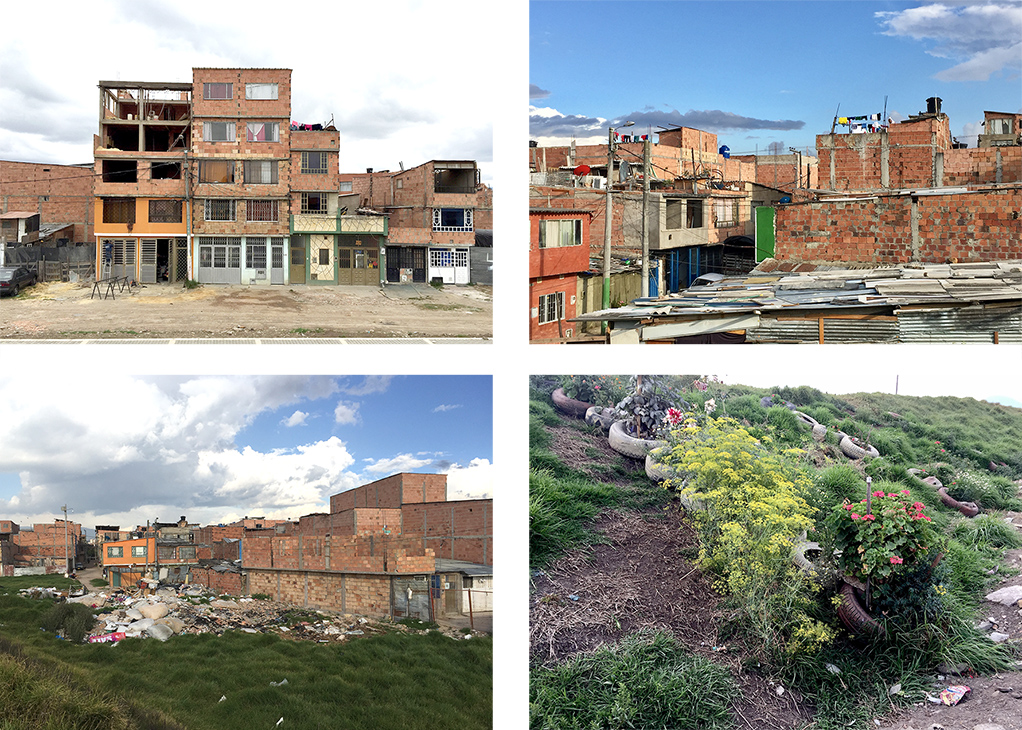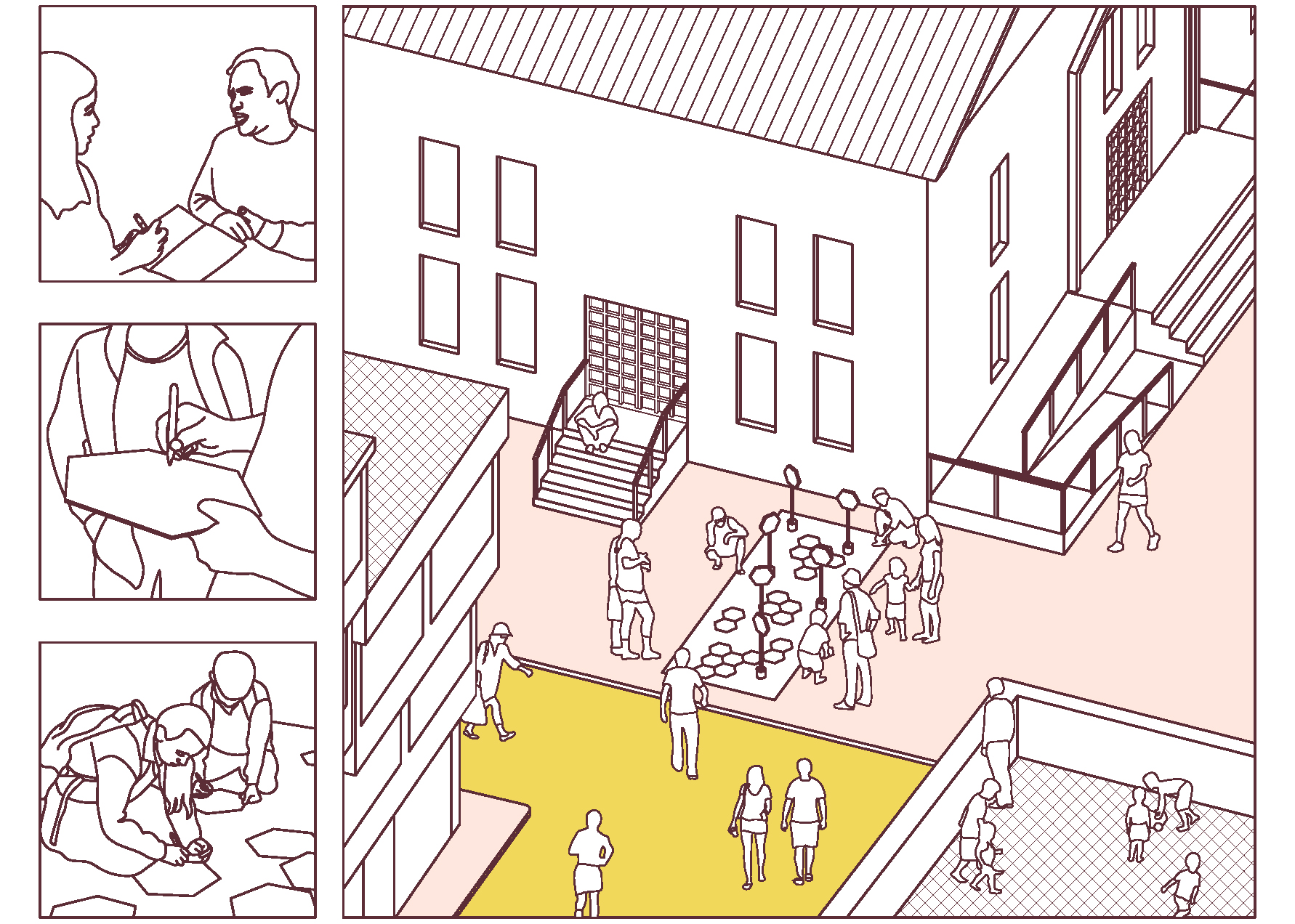The many years of conflict in Colombia have forced many people to leave their hometown and move to larger cities like Bogota. Upon arrival, they usually reside in the peripheral and poor areas of these urban centers.
For this case study, we went to the Lisboa neighborhood in the locality of Suba, which has the fourth largest number of internally displaced persons (IDP) in Colombia. It is located along the river edge, and it is one of the poorest, densest and fastest-expanding residential areas in Bogota. Thus, the distribution of population over this water edge has been developed more as a result of an organic evolution of the location of settlements, business and industry rather than as a result of a careful planning of land uses and urban services.
Team: Yanling Deng, Angelina Andriani Putri

Through our study and research, we found that there are internal and external limitations for the adaptation problems in this area which caused many social and security problems such as racism and discrimination towards the IDP, lack of available jobs for the IDP that will in turn increase the crime rates in the area and the segregation between the locals and the displaced in the community. They desperately need an organized community and a sense of belonging. Furthermore, based on the interviews that we conducted in Lisboa, it is apparent that the IDP still have lingering attachment to their hometown and wish to have those spatial qualities of their hometown that they couldn’t get in Lisboa.

We designed an interactive survey that allows various ethnic group, gender and age to express themselves and what they desire in their current community. We started with simple questions such as where are they from? What do they miss from their hometown? What can we do to help the neighborhood attain what they wish for? They were kindly asked to sketch down their vision of the neighborhood, and the result shows as below.

“We don’t have nothing but a small and sad park” (Gloria Sipacon - neighbor)
“Drugs consumption at age 8-9” (Isabel Ortega - neighbor)
“Crime is the most negative aspect of Lisboa, people go out of there houses and get back early because they are afraid” (David Omar - neighbor)
“The most positive thing... Well, we have been here for years...my mother was one of the founders, she brought water, all of that. We saw our church grow, we saw our neighborhood grow...in all truth I have seen a lot of growth in the neighborhood. “(Sandra Rivero - mother’s organization)
“The people that first arrived in this place were looking for land to build a house, it was a very individual process. There was never a collective intention to create a neighborhood...[because of this] they didn’t leave space for parks, libraries, museums, hospitals [...], none of that was part of the original intention for [lisboa]...” (Julian Bejarano Gomez)
“Owners do not want to rent to Afro Colombians. They were only left with the option near the riverside”. (Edilsa Rojas - researcher)
“The things they know -their skills- are not useful anymore, they feel it is like starting from scratch” (Julian Bejarano)

We observed that religious activities have been taking the biggest part of their sparetime, and a tiny local church was the most prominent institutional structure in the neighborhood. There were some efforts made by the church and other local community-based organizations to help and train the IDP, yet the capacity was limited.
Looking on these problems, we propose the Pilgrims Lighthouse – a lighthouse of experience, formed with six structures as its chain of comforting destinations; also a lighthouse as the landmark of peace and hope, illuminates their somewhat obscure roads.


